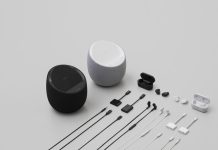
While a good many people know about the current state of play with Android (it’s easy to keep up, just read Ausdroid!), the history of our favourite mobile operating system is less well known, but equally interesting. We thought we’d give you a quick run down of how Android has come along from humble beginnings to its 80% market share today.
2003
Android Inc. is founded by Andy Rubin, Rich Miner, Nick Sears, and Chris White. Andy Rubin and the team worked on the precursor to Android, which they aimed would run on phones and digital cameras.
2004
Andy Rubin runs out of funds to run Android Inc. Friend and former Apple engineer Steve Perlman brings Rubin $10,000 in cash, saving Android Inc. Perlman eventually loaned the company $100,000 and refused a stake in the company.
2005
Google buys out Android. Key employees like Rubin and Miner stay with Android (thus joining Google) after the acquisition.
2007
January – Apple unveils the iPhone at its annual MacWorld convention. The phone is released on June 17th. The first iPhone, and many subsequent, are hugely successful, virtually redefining the mobile technology landscape.
November 5th – Google launches the Open Handset Alliance (or OHA), a consortium of companies aimed at developing open standards for mobile devices, and first unveils Android to the public.
2008
February – Qualcomm and Texas Instruments (part of the OHA) create chipsets compatible with Android.
September 23 – Android 1.0 is released. Its core features included a web browser, camera support, a basic home screen, Google apps with sync (Gmail, Contacts, Calendar), basic maps and search functionality, a media player and notifications shown in the status bar, amongst other useful things.
October 28 – The HTC Dream (known as the G1 in the USA) is launched in a partnership between T-Mobile, Google, and HTC. This is the first Android smartphone ever, and went on to become the platform used by many developers of third-party ROMs based on Android.
2009
April 30 – Android 1.5 “Cupcake” is released.
Q2 2009 – Android has captured 2.8% of the mobile market.
September 15 – Android 1.6 “Donut” is released.
October 26 – Android 2.0 “Eclair” is released.
November – Motorola Droid is announced. A Verizon exclusive, the Droid marks the beginning of Android’s rise in popularity and marketshare, and is hugely popular in its own right in the US market. It was the Motorola Droid, which eventually made its way to Australia via importers, which led to the creation of Ausdroid.
2010
January – The Nexus One is launched in a partnership between HTC and Google. The phone is sold unlocked and exclusively online for $529. It was Chris’ second Android handset, and remains to this day one of his favourites.
Q2 2010 – The guts of the Nexus One are released in an HTC body and called the HTC Desire. Exactly the same specifications, the HTC Desire was (for many) the beginning of Android’s dominance of the smartphone landscape. Hugely popular, widely available, the HTC Desire was truly a fantastic phone.
May 22 – Android 2.2 “Froyo” is released.
June – Samsung releases its Galaxy S smartphone. Variants would go on to feature on multiple carriers around the world and the brand would prove unbelievably popular. At the time of writing, Samsung has sold more than 100 million Galaxy branded phones.
June – HTC and Sprint release the EVO 4G. The first 4G smartphone, the EVO was widely regarded as the best iPhone alternative at the time (though in hindsight, it wasn’t that great!)
July – With lacklustre sales due to its online exclusivity and lack of carrier subsidies, the Nexus One is discontinued by Google in July of 2010.
Q4 2010 – Android has captured 33% of the market. Android’s marketshare surpasses that of the iPhones in the USA.
December 6th – Android 2.3 “Gingerbread” is released alongside the Nexus S, Google’s second Nexus reference handset. Manufactured by Samsung, the Nexus S featured similar specifications to the Galaxy S series, and is (perhaps as a consequence) a more popular handset.
During the latter half of 2010, and prior to the Xoom (see below), there had been other Android tablets, including abortive attempts from Samsung, Huawei and ZTE. These ran early versions of Android essentially on a larger screen, and while they were functional, they certainly weren’t great. None of these achieved any real market prominence.
2011
February 22 – Android 3.0 “Honeycomb” is released alongside the Motorola Xoom. Source code is withheld by Google. The Xoom is fairly credited as the start of Android for tablets, though it was itself a fairly ordinary product (and the Xoom 2 did nothing to help improve that image).
Q2 2011 – Android has captured 53% of the market, finally surpassing Blackberry’s marketshare.
October 19 – Android 4.0 “Ice Cream Sandwich” is released alongside the Samsung Galaxy Nexus. The Galaxy Nexus went on to become one of the most popular Nexus devices.
ICS brings the biggest aesthetic changes to Android and works on both phones and tablets, and leaves behind some of the aspects of Honeycomb that just didn’t work very well. Unlike Honeycomb, the source code for ICS is readily available.
November – Following its loss in a lawsuit between it and Apple, Samsung launched a massive marketing campaign attacking Apple and the iPhone. Quite likely due to Samsung’s impact in the market, Android would go on to leapfrog iOS in market share.
2012
June – Android 4.1 “Jelly Bean” is released alongside the Nexus 7, a small tablet created in a collaboration between Google and Asus. For many (well, certainly many Ausdroid staff) the Nexus 7 was the defining moment in Android tablets — it embodied everything that a tablet should be, and became quite a popular seller.
Jelly Bean 4.1 features Google Now, a more robust personal assistant than Apple’s Siri, as well as “Project Butter”, which makes Android software smoother on mobile devices.
June 27 – Google unveils the Nexus Q, a media streaming device that was quickly discontinued before the announcement of the Nexus 4.
October 29 – Google announces the Nexus 4, a collaboration between it and LG. The phone launches with Android 4.2, which still bears the name “Jelly Bean.” The Nexus 4’s only letdown was the lack of 4G/LTE, and its somewhat fragile glass front/back which are easily broken.. regardless, the Nexus 4 is still sold today, and remains a popular handset of choice amongst Android enthusiasts.
October 29 – The Nexus 10, a collaboration between Google and Samsung, is announced alongside the Nexus 4. It doesn’t do so well.
Q4 2012 – Android has captured 75% of the market.
2013
Q1 2013 – Sees the release of a number of so-called ‘superphones’, including the Sony Xperia Z, Samsung Galaxy S 4 and HTC One, respectively some of the most popular Android handsets of all time.
July 24 – The second generation Nexus 7 is announced alongside Android 4.3 “Jelly Bean”. The new Nexus 7 is even better than last year’s model, and redefines what an Android tablet should be (hence the description often given to Nexus devices as ‘reference devices’).
September 3 – Android 4.4 “KitKat” is announced. Nexus 5 is expected to launch alongside it in October, possibly October 14 if Ausdroid’s rumour is proven to be correct.
Have you got a key point in Android’s history that you think should be included above? Leave your suggestions in the comments and we’ll incorporate the key moments.
Header graphic adapted from Android History by verysmucks, licensed under Creative Commons.




I was using a Nokia N97 mini when a friend showed me guys HTC Desire…it ran so smoothly compared to the Nokia which was a piece of shit. this was to be the first of many Android devices..well 3 off them anyway. Samsung Galaxy S2 was next and now I’m running the S3. Tablet wise, I’ve got the Asus Transformer Pad and Nexus 7 (2012). My next planned devices are the new Nexus 7 and either the SGS4 or the Nexus 5…
Yes, block my comment why don’t you.
2006
A whole lotta nothin’.
Pretty much. Everyone speculated that Google was working on something to do with mobile devices .. but there were hardly any facts until much later.
Another thing missing from this timeline is the introduction of higher resolution displays in Android devices, which drove the need for more powerful GPUs
You can’t really say that was a single step in a particular year though. It’s been a progression from the beginning by various manufacturers and models, not to mention playing ‘catch up’ with a fruit-based rival.
I think my first android experience was with an HTC Wildfire. What a terrible experience that was. I’m surprised I stuck around.
Probably should specify *smartphone* market just to be clearer.
No mention of when the first generation of Android tablets surfaced and why they drove the dev of the tablet OS Honeycomb and tablet specific apps.
Earliest tablets I know of are the Huawei Smarkit S7-104 (aka Telstra T-Touch Tab) announced Jan 2010 released Q1 2010, ZTE V9 (aka Optus MyTab) announced Oct 2010 released Q1 2011, and the original Samsung Galaxy Tab P1000 announced Sept 2010 released Oct 2010.
Great point – the early tablets really were important lessons leading toward Honeycomb and only crystallising in jellybean.
Some mention of the acquisition of Palm designer Mattias Duarte probably also important to recent Android history.
No mention of HTC Desire..? That phone was a massive hit and my first android phone.
agreed, the phone that brought android into lime light and was a good competition for iphone 3gs and phone that made samsung to think about android seriously 🙂
Same with me. I think it was the Desire that put android on the map in Australia. Heaps of people I knew had one.
I remember being hugely p*ssed at Apple for ‘breaking’ my iPhone 3G with a software update which made the phone un-usably slow. Just at that time, my friend showed me Desire HD and I was totally sold; the Youtube app blew me away.
Now I’ve got a Nexus 4 and Nexus 7 (2013).
I think Desire qualifies as a highlight of 2009 tho’ you’ll find its USA equivalent (Eris) was far less well-received. Same story with HTC’s Hero, from a few months earlier; excellent battery life helped make it a big hit in the UK and Commonwealth nations…not so much, over here.
Meanwhile, 2010’s Droid X was a truly massive success stateside but the international version (‘Milestone X’) hardly made a ripple. And speaking of Motorola phones, it should be noted that Eclair (Android v2.0) — with its turn-by-turn voice navigation — launched as a Droid exclusive.
.
HTC Desire was a 2010 phone..
Not exactly.:
http://en.wikipedia.org/wiki/HTC_Bravo_and_Eris
.
Agreed… the HTC Desire was huge as Telstra pushed it hard and it introduced a lot of people (including me) to Android. Although it was just a slightly better spec’ed version of the Nexus One. It seemed like the release of that phone was a turning point in Australia for Android.